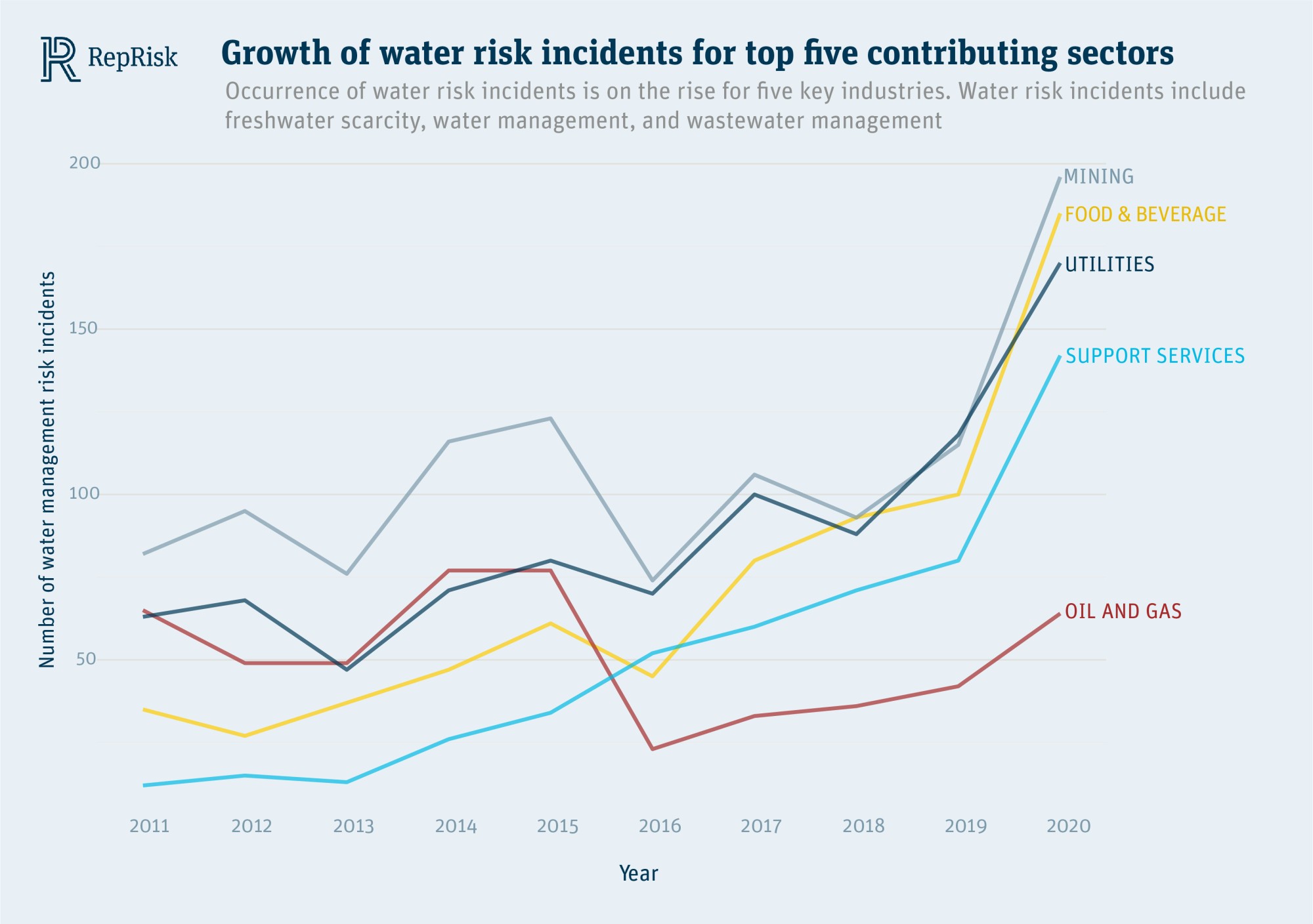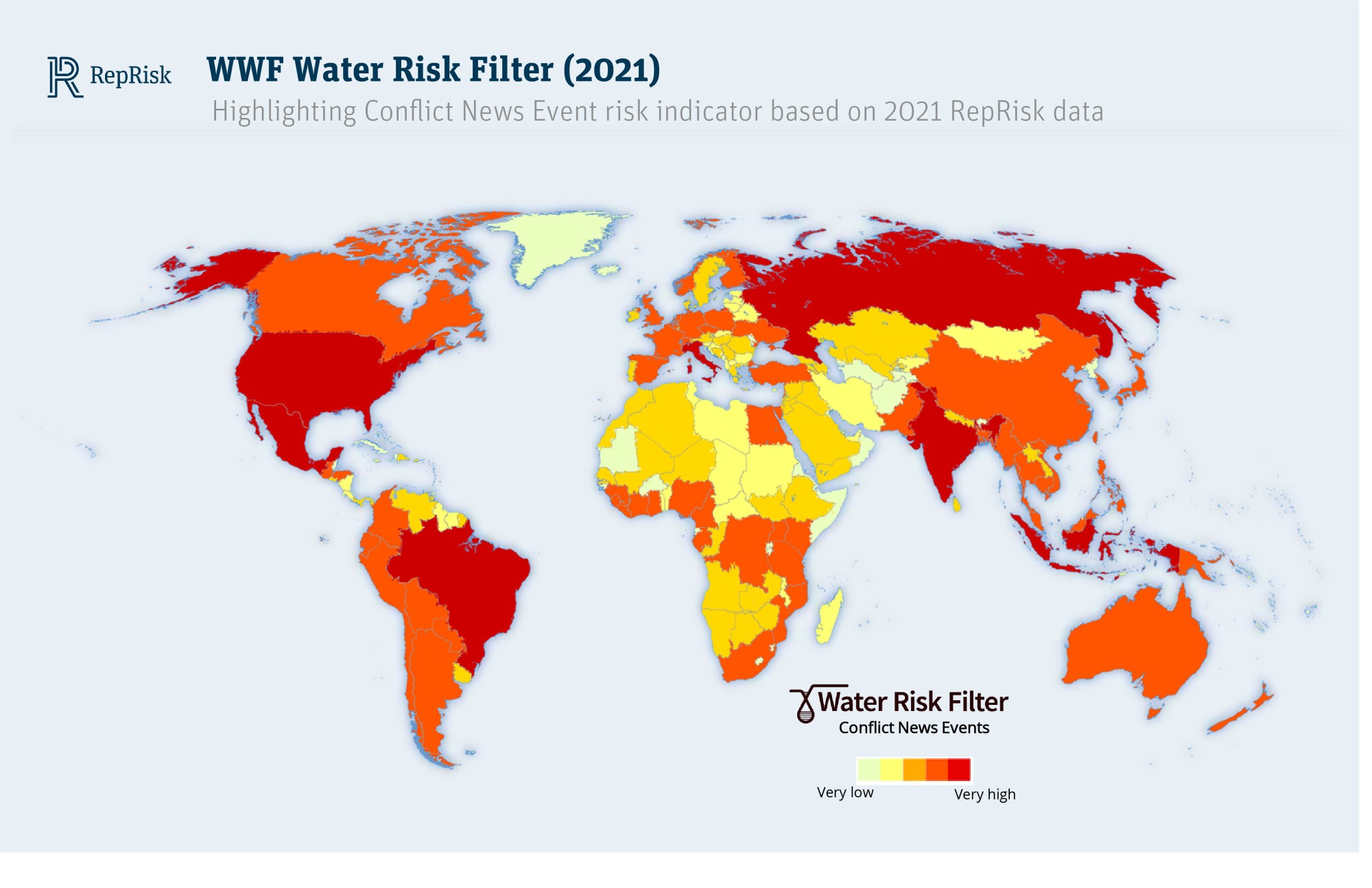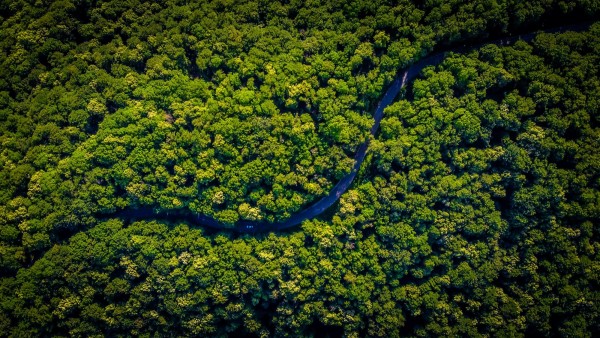# I. An undervalued resource
As climate change heightens the pressure of water security, financial professionals are turning their attention to the impact of water risk management related to their business and investments. Long underestimated as a low-cost resource, water issues impact the local environment, community, food security, and supply chain. While 10% of global GDP comes from regions that are currently facing high water risk, projections by WWF’s Water Risk Filter show this number could increase to 46% by 2050.
# II. WWF Water Risk Filter and RepRisk
Water risk analysis requires knowledge of basin and operational risks to understand the current conditions, as well as how water is being managed to ensure future water availability and quality. The WWF Water Risk Filter (WRF) is a free, practical online tool that enables companies and investors to assess both basin and operational water risks in order to identify water risk hotspots across operations, supply chains, and investments. The new 6.0 version of the WRF tool, launched on November 24, 2021, provides 2030 and 2050 scenarios of water risks, based on climate and socio-economic changes, to enable users to evaluate future risks and opportunities, and inform their long-term resilience planning and strategy as recommended by the Task Force on Climate-related Financial Disclosure (TCFD).
RepRisk has partnered with WWF since 2018 to provide country-sector level data on ESG and reputational risk for the WRF. Specialized in ESG risk data and leveraging artificial intelligence and machine learning together with human curation, RepRisk offers daily updated and granular data on any company, sector, or country globally. Because RepRisk excludes company self-disclosures, its perspective serves as a reality check for how companies conduct their business around the world – do they walk their talk when it comes to human rights, labor standards, corruption, and environmental issues such as water risk?
In light of the newest WRF version becoming available, RepRisk examined ten years of data (2011 to 2021) to uncover insights related to the nature and location of risk incidents – looking specifically at water risk exposure incidents that involve water availability and quality: water scarcity, water management, and wastewater management 1. Approximately 6% (10,900) of companies and 11% (4,950) of infrastructure projects have been linked to ESG risks related specifically to water scarcity and water management, out of the 300,000+ companies and 100,000+ projects with ESG risks in RepRisk’s dataset.
# III. Changing landscape of freshwater issues
Over the past ten years, the annual quantity of water risk incidents has increased for the four of the five sectors that are involved in the highest number of this type of incident: Mining, Food and Beverage, Utilities, Support Services.

Fig1: Growth of water risk incidents for top five contributing sectors
At the start of the decade, the Oil and Gas sector saw an uptick in the number of water-related issues as hydraulic fracturing became the dominant form of natural gas production in the US. Fracking incidents peaked in 2014, making up 50% of all oil and gas water-incidents that year. A sharp increase in water-related incidents across sectors in 2020 can be traced to an avalanche of critical risk incidents covering wastewater management in Russia.
The following table shows the top ten countries in which the most water risk incidents occurred in the past two years. While the United States sees the most water risk incidents overall, countries like Chile and Mexico have a greater portion of total risks related to freshwater.
Table 1: Global water risk iteractive table
Source: RepRisk ESG data science and quantitative solutions, www.reprisk.com
On average, agriculture accounts for 70% of global freshwater withdrawals and represents one of the biggest causes of water pollution worldwide. Consequently, Food and Beverage is one of the key sectors highly exposed to water risks across its agricultural supply chains. With freshwater resources under increasing pressure due to climate and socioeconomic changes, it is critical for Food and Beverage companies to have a comprehensive understanding of both current and future water risk within sourcing regions of their key agricultural products, in order to build water stewardship strategies for long-term resilience – as illustrated in WWF Report 2021.
A snapshot of the WRF shows further geospatial trends related to water risk.

Fig 2: WWF Water Risk Filter (2021)
# IV. Water risk is a human issue
Water is an essential resource for all people and nature. Mismanagement of water and pollution of local water sources often impacts not only ecosystems, but also local communities. 65% of recorded water risk incidents in the past two years also had a direct impact on the local community. When water incidents have an impact on the community, they are often more severe - on average by 23%.

Fig 3: Water risk: impact on community and incident severity
# V. Path to water stewardship
The future of water availability and quality depends on collective sustainable water practices and climate action. Implementing lessons from past ESG incidents can help to transform water risk into operational resilience. RepRisk and WWF can help to identify, assess, and respond to water risk exposure in an investment portfolio, supply chain, or across business operations.



